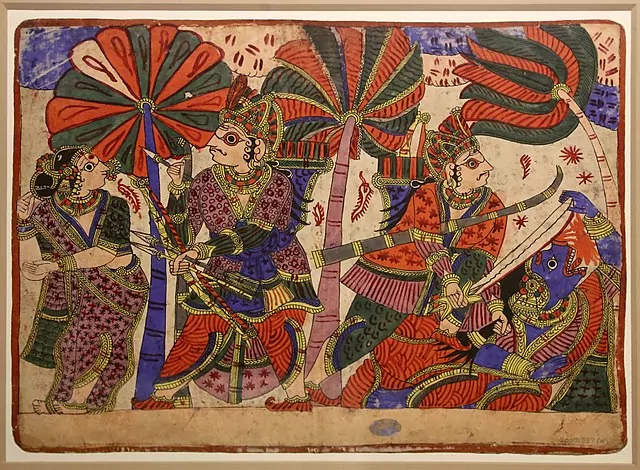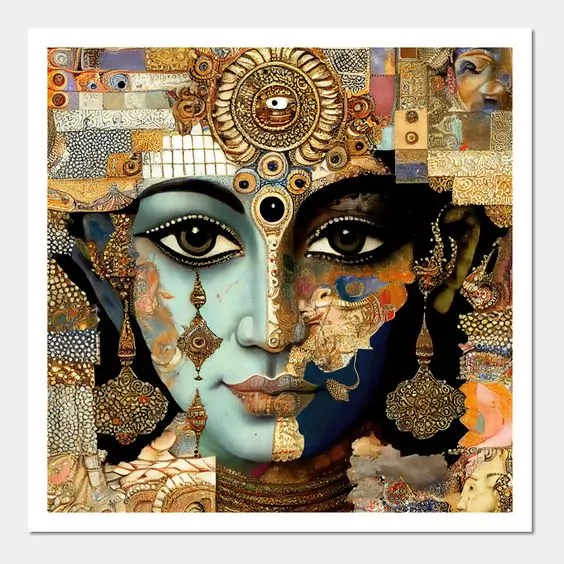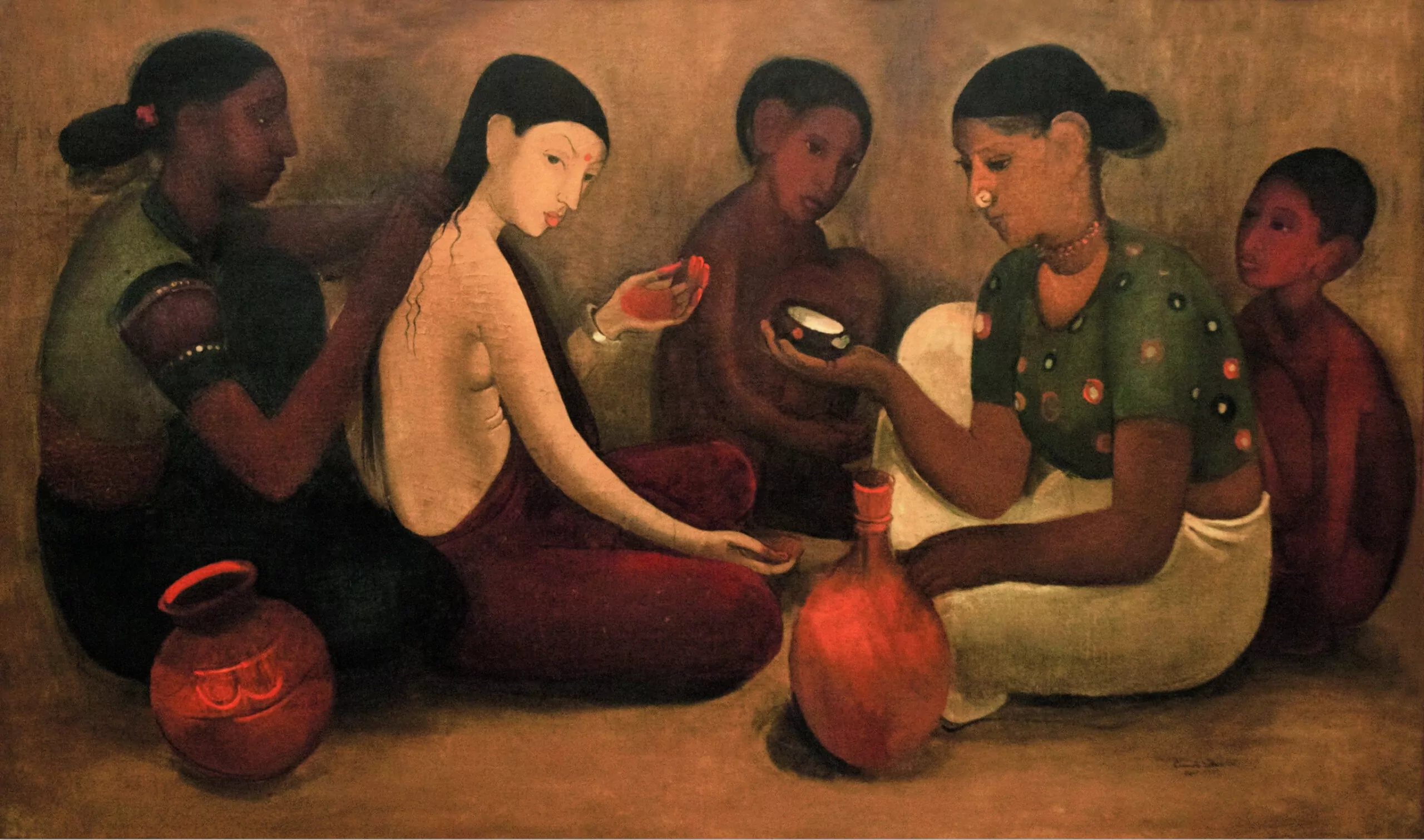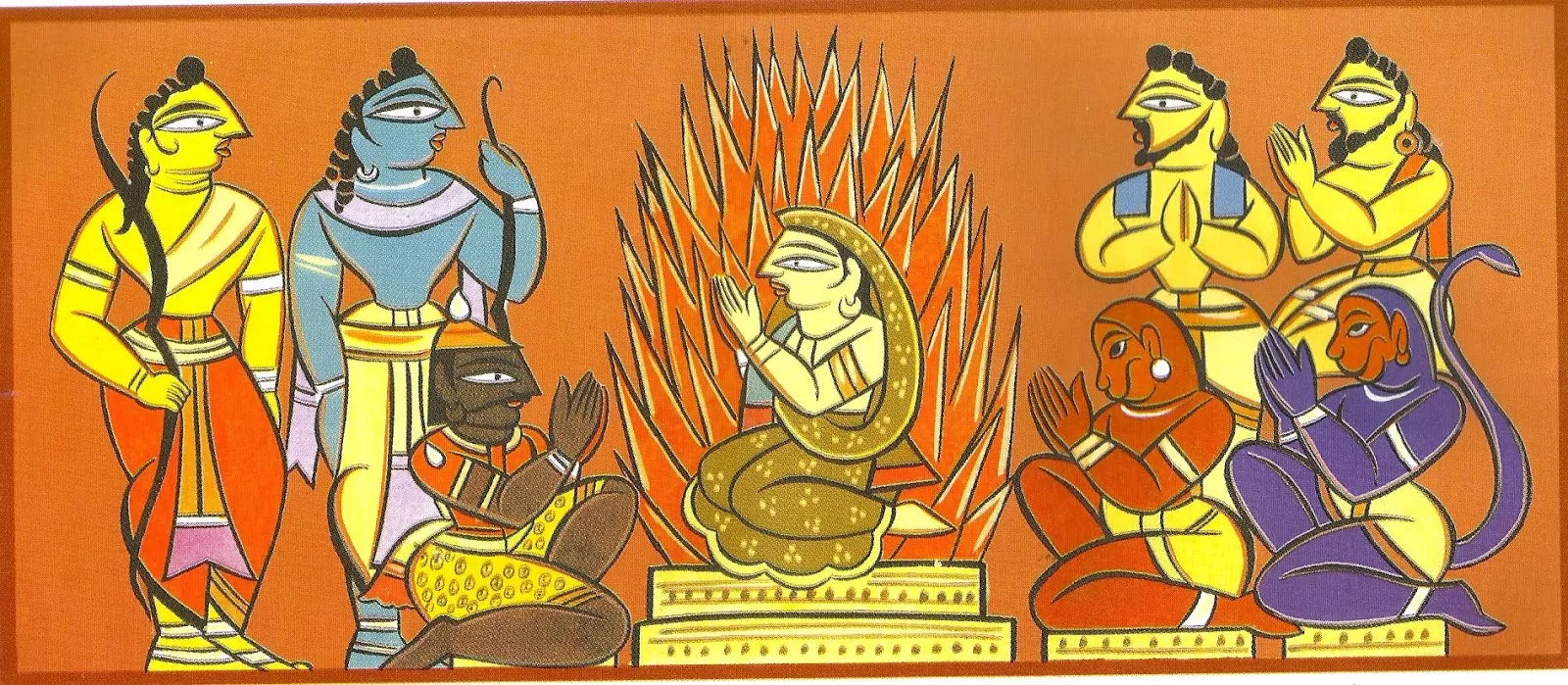The Story-Telling Tradition From Pinguli, Maharashtra
When you think of the tribal art of Maharashtra, you inevitably think of Warli painting. Its commercial success has put Indian tribal art on the global map. But did you know that another style of tribal painting also originated in Maharashtra? Chitrakathi is a 400-year-old art form that began as a visual aid for the performing arts and evolved into a distinct art form.
Chitrakathi is a highly stylized and colourful type of painting that is part of tribal history and tradition. Let’s take a look at Pinguli Chitrakathi and its role in the history of Maharashtra.
An Introduction To The Pinguli Chitrakathi Painters
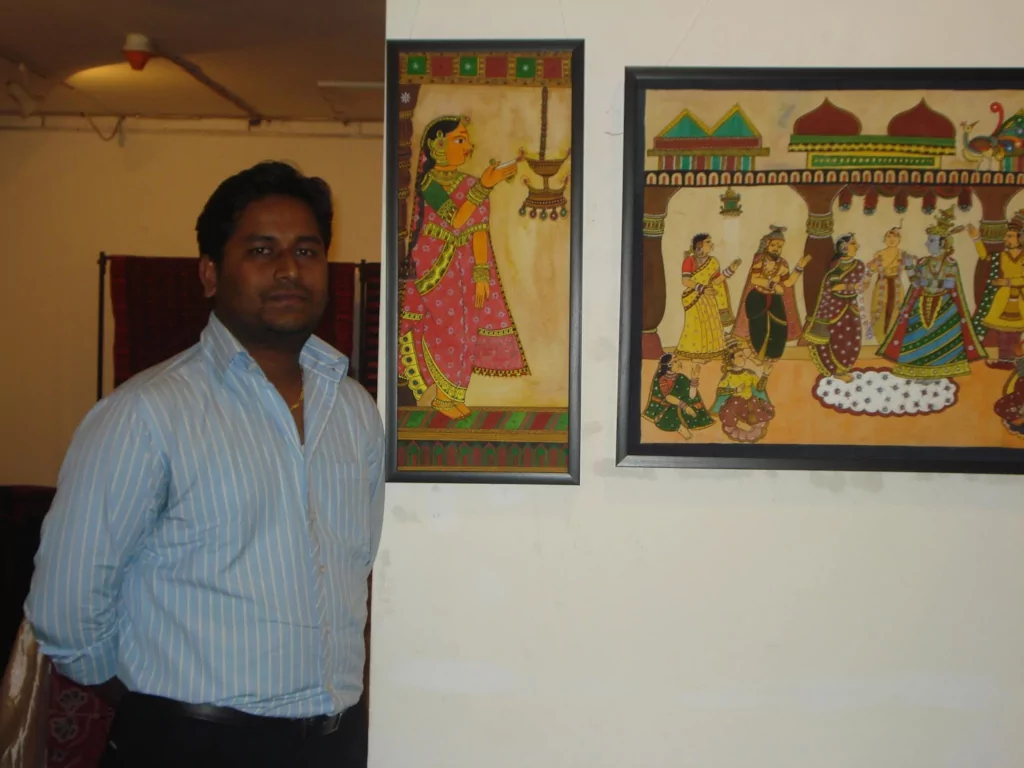
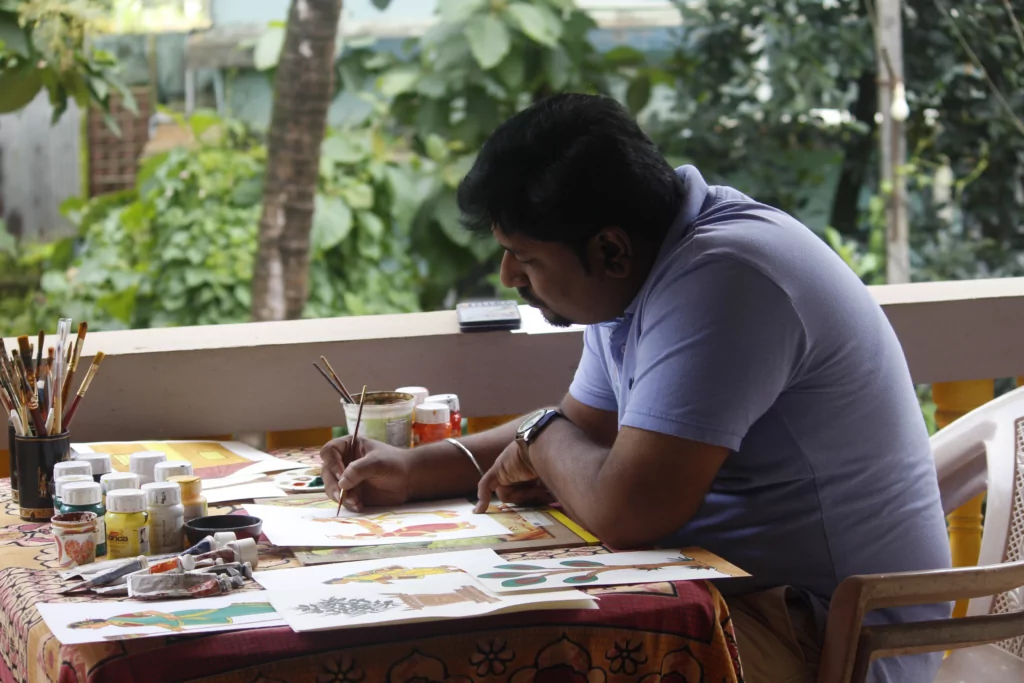
‘Chitra’ means picture, and ‘Katha’ means story. Thus, Chitra Kathi means picture stories, or illustrations used to tell stories. When storytellers performed for audiences, they would include these paintings and accompany them with singing and a sutradhar (narrator). Chitrakathi is practised in a small village called Pinguli by the Thakar community. The Thakars are a scheduled tribal community in Maharashtra and have a population of about 2000. Over 200 Thakar families live in Gudhipurwadi, Pinguli.


The Thakars were nomads until 400 years ago. They engaged in a variety of performing arts, including Panguel Bael (decorated bulls that accompanied the story-telling performance), Gondhal (group sing and dance performances), and Fughdya (dance performed during Ganeshotsav). The Thakar community traditionally practised 11 art forms, out of which 3 were artisanal arts and 8 were performing arts. The story-telling art form of this tribal community is called Chitra Katha, and Chitrakathi is one of its four forms. It also includes leather shadow puppetry, kalsuti (stringed wooden puppets), and Bullock art shows.
The Historical Significance Of Pinguli Chitrakathi


The Thakars believe that Shivaji heard their ancestors performing while he was passing by a forest. He asked the chief of the community to meet him and proposed that the Thakar community work for him as spies and entertainers. The Thakars would hold performances and entertain people while staying alert to any sensitive information. They travelled from village to village and reported anything they learned to the Maratha Empire. They would sing outside temples at night and mingle with villagers during the day. The villagers would pay these performers alms such as cashew nuts, coconuts, rice, and kokum (a small and sour purple fruit). Under Shivaji’s rule, Chitrakathi painting prospered, and artists switched from painting on leaves to paper.
The art declined during British rule for several reasons. The British exiled the Thakars after they learned about their role as spies for the Maratha Empire and the Sawantwadi royal family. This led to many of them abandoning the art form in favour of other jobs. By the time Vishram Atmaram Gangawane began practising Chitrakathi art, it had almost disappeared. Vishram taught his son, Parshuram Atmaram Ganagavane, who in turn taught his own children. And thus, the Gangewane family managed to preserve the legacy of Chitrakathi.
Also read: The Role of Art in Keeping Culture of Indian Tribal Communities Alive
Popular Themes Of Chitrakathi Paintings
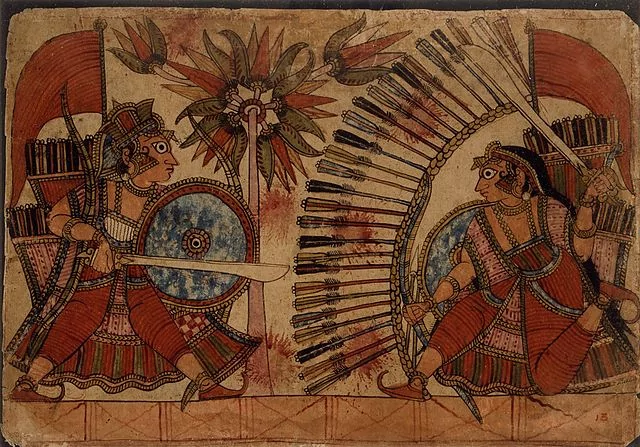
The themes of Chitakathi are mostly mythological and religious in nature. The artists narrate stories from the Ramayana, Mahabharata, and Nandi Puran. The epics of Lanka Dahan, Rama Vijaya over Ravana, and Rukmini Swayamvara are popular themes. They accompany the folk retelling with paintings and folk songs. The performances only feature three musical instruments: the taal (manjeera or clash cymbals), the huduk (a two-headed drum), and the Veena.
The subject matter of Chitrakathi paintings has evolved from mythological renditions to contemporary commentary on issues like cleanliness, female feticide, women’s empowerment, etc. The Gangavene family created several art pieces about COVID-19, COVID warriors, and social distancing in the wake of the pandemic. The Chitrakathi style contains bold brushwork that is reminiscent of Telangana’s shadow puppets.

Artists now use hand-made paper and natural colours for their art, which makes Chitrakathi paintings sustainable and eco-friendly. Flowers, leaves, seeds, soil, etc. are used to make natural paints. Traditional Chitrakathi paintings would measure about 12 inches by 15 inches or 12 inches by 18 inches. A collection of about 50 paintings would form a single pothi, or portfolio. Now, canvas sizes vary according to customer requirements.
Also read: Shape Language And Storytelling In Indian Tribal Art
Efforts Taken To Conserve Chitrakathi Painting
The families that practise Chitrakathi painting have been allotted temples by the Sawantwadi royal family. They narrate mythological stories and also hold performances at these temples on certain days of the week. The Sawantwadi royalty also provided the land where the Thakar families reside as a reward for their espionage services.
Only a handful of families in Pinguli, in Kudal district, practise the ancient art form of Chitrakathi painting. The reputed artist Shri. Parshuram Gangavane established an art gallery and museum to display the folk art of the Thakars.This museum was established by selling the family cows and converting the cowshed into the museum building. The Thakar Adivasi Kala Aangan (TAKA) museum and art gallery showcases paintings, puppets, and musical instruments and offers an interesting insight into the performances of the Thakar community.
Parshuram Atmaram Gangavane has been awarded a Padma Shri for his contribution to this ancient art form. He used the performance art forms associated with the Thakars to promote Chitrakathi paintings as handicrafts. His family uses traditional methods of Chitrakathi painting and teaches them to students as well. They have trained over 100 students in this ancient art form. Parshuram and his sons travel across the country to conduct workshops, seminars, and participate in exhibitions. The Gangavene family began to popularise the art form as ‘Pinguli Chitrakathi’ in order to honour the artisans of the village.
Download the Rooftop App from Google Play or the App Store to learn more about how you can help preserve India’s rare and fading art forms!
Discover us on Instagram @rooftop_app for all things on Indian traditional, folk, and tribal art.
By Melissa D’Mello

